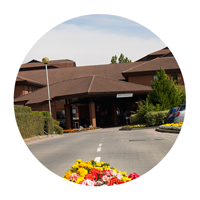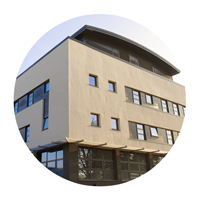It is our aim to ensure that every couple we see for investigation and treatment connected to infertility problems is treated with dignity, empathy and respect.
What happens at the Sub Fertility Clinic
During the first appointment a detailed history is obtained from both partners. It is helpful if a detailed account of menstrual history is available at this appointment.
During the appointment appropriate tests and investigations are requested. Once all tests are complete a follow-up appointment is arranged to discuss how treatment will progress. This process can sometimes be quite lengthy, as most of the tests and investigations have to be timed around the menstrual cycle.
A range of tests and investigations are available these include:
- Hormone blood tests
- Ultrasound Scans and follicle tracking scans – Follicle tracking scans are performed on a Monday, Wednesday and Friday. During these scans the follicles which usually contain eggs are measured and the lining of the womb is also measured. If during your consultation these scans are requested you may book them by contacting the clinical nurse specialist.
- Hysterosalpingogram – This is an X-Ray dye examination of the womb and fallopian tubes.
- Hysteroscopy – This procedure is usually performed under general anaesthetic. A small , fibre-optic telescope is passed through the vagina and cervix and into the uterus (womb). The cavity of the womb can then be clearly seen and assessed.
- Laparoscopy and dye – This procedure is performed under general anaesthetic and is used to examine the reproductive organs lying within the abdomen. Carbon dioxide gas is pumped into the abdomen to separate the organs so that they can be seen more clearly. A small incision is made through which a fibre-optic telescope is inserted. Dye is injected through the vagina and cervix into the uterus (womb) if the Fallopian tubes are not blocked the dye will pass along and spill out into the abdomen.
- Semen Analysis – A detailed report of the quantity, quality and movement of the sperm.
Treatments include:
- Ovulation induction – This involves the use of medication to stimulate the ovaries to produce follicles. Follicle tracking scans are performed throughout this treatment.
- Ablation of endometriosis – This involves a general anaesthetic and a laparoscopy. Areas of endometriosis are removed during the operation.
- Ovarian drilling – This involves a general anaesthetic and a laparoscopy. This procedure may be used for women with PolyCystic Ovaries. Several very small holes are made in the ovaries, ovulation returns to a normal pattern for many women following this procedure.
Information regarding criteria for infertility investigation and treatment can be obtained from the Clinical Nurse Specialist.
Links and Addresses
Donor Conception Network
154 Caledonian Rd,
Islington,
London N1 9RD
Tel: 020 7278 2608
www.dcnetwork.org
Endometriosis UK
Suites 1&2,
46 Manchester St.,
London W1U 7LS
Tel: 0808 8082227
www.endometriosis-uk.org
Fertility Network
Forum at Greenwich,
Trafalgar Rd,
Greenwich,
London SE10 9EQ
Tel: 01424 732361
www.fertilitynetworkuk.org
The HFEA
Paxton House
30 Artillery Lane
London E1 7LS
Tel: 020 7377 5077
www.hfea.gov.uk
Verity
The Polycystic Ovaries Self Help Group
52-54 Featherstone Street
London
EC1Y 8RT
www.verity-pcos.org.uk






